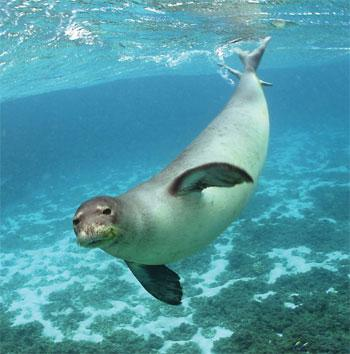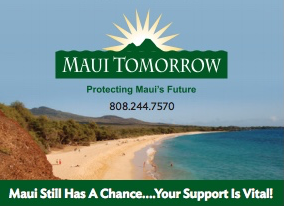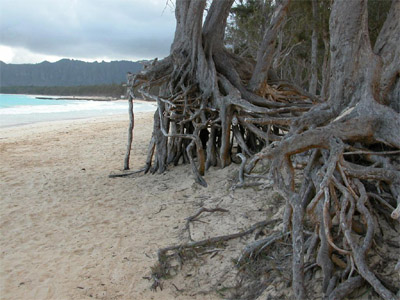Trisha Kehaulani Watson writing in The Garden Isle
Monk seals on Kaua‘i are a hard issue. There are very hard debates to be had about balancing conversation needs and local livelihoods, not only regarding seals but the many conservation issues that exist on Kaua‘i.
But let’s start with the facts.
Monk seals are native to Hawai‘i. They are millions of years old and pre-date the presence of Native Hawaiians in the islands.
There is evidence of the monk seal in Hawaiian language archives. Hawaiians across the pae‘aina had numerous names for the seals. There are place names associated with the seals across Hawai‘i. There are archaeological remains of seals living in Hawai‘i prior to foreign contact.
The monk seal appears in the Kumulipo in Ka Wa Eone (The Sixth Era) as “ioleholoikauaua” – the rat running along the wave. This is particularly interesting for the island of Kaua‘i, whose own history teaches about the Kiko‘o children, child-gods born in the form of rats.
Monk seals appear in the Kumu Honua genealogy (a migration genealogy) as ka ilio holo i ka uaua a Lono. Mary Kawena Pukui identifies two terms for seals in her dictionary: ilioholoikauaua and hulu.
The Andrews 1865 dictionary uses the term he ilio o ke kai for seal. The Parker 1922 dictionary identifies the term ohulu as a seal hunter (“o, to spear; and hulu, fur or feathers. A seal hunter”).
There are three reported cases in which archaeological remains included those from Hawaiian monk seals, two from Hawai‘i island and one from Maui, definitely proving monk seals existed in the main Hawaiian islands hundreds of years ago. There are families who identify them as kupuna and ‘aumakua.
We do not dispute that it is likely kupuna who spent their lives in the ocean never saw monk seals growing up. During the whaling era, when seals were a prized commodity, and the animals were hunted to very low numbers in Hawai‘i.
There are records of a whaling expedition taking 1,500 monk seal skins in 1859, and there are records of other expeditions taking seals. Like so many native natural and cultural resources, the monk seal population was devastated by foreign commercial interests.
We also do not dispute that the seal does not have the same cultural significance as animals like the mano or honu. Hierarchies of significance are standard in traditional Hawaiian beliefs and practices.
Also standard among Hawaiians was a superior ability to manage resources and resolve conflict. Traditional Hawaiians were among the most brilliant resource managers in the world.
We were the most literate people. We led with power, grace and dignity.
We led in a manner that allowed for the feeding of our communities and the protection of resources. One never came at the expense of the other. They do not need to now, because balance can be found if leaders step forward to help create a solution.
And a real solution is needed now. Monk seals are not the only conservation conflict Kaua‘i faces. And rather than perpetuating misinformation, we urge leadership, education and problem-solving.
Intelligent, sustainable co-existence with our native natural resources is not simply needed, it is necessary and it is Hawaiian.
• Trisha Kehaulani Watson is with the Marine Conservation Institute.




